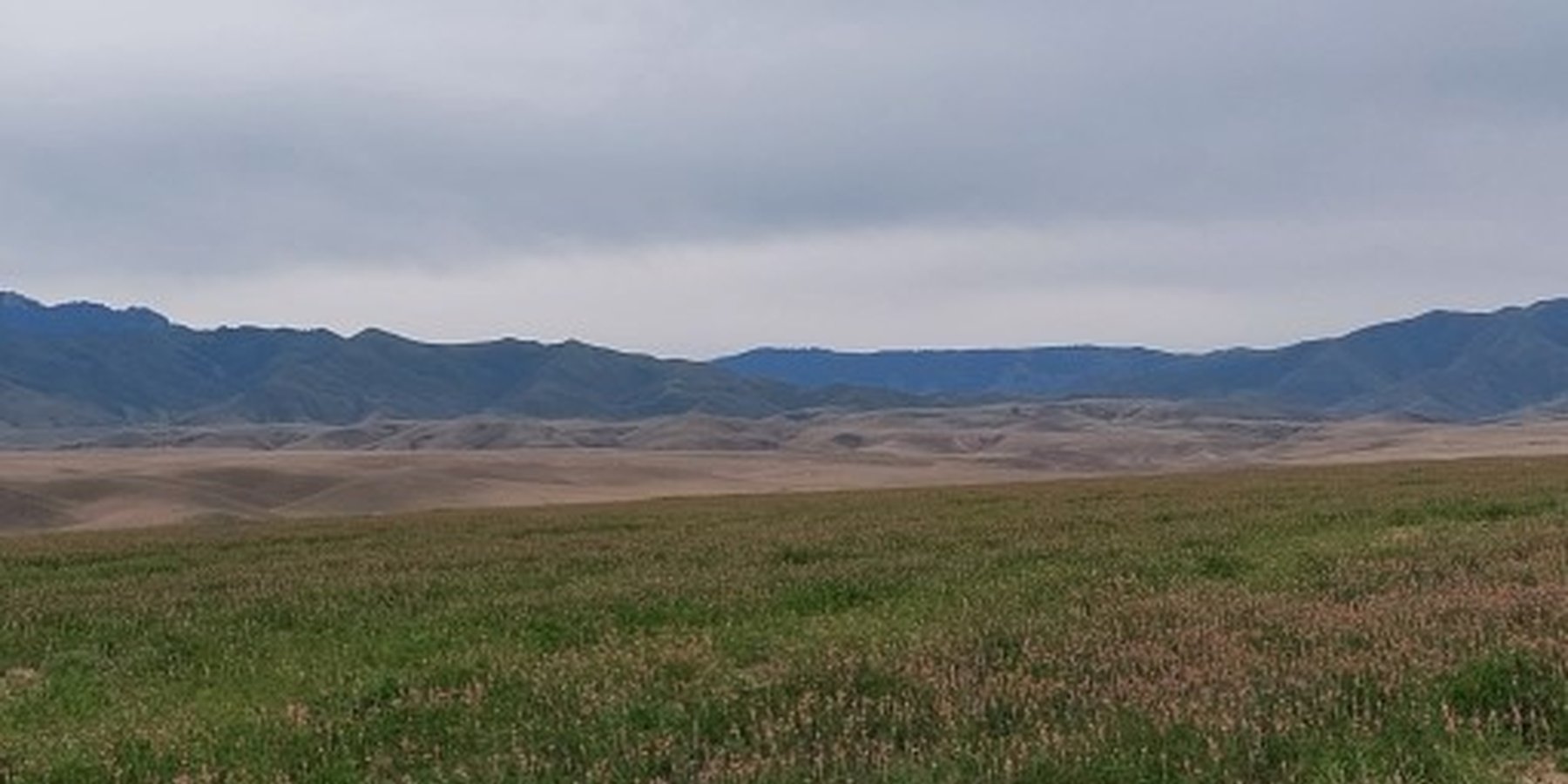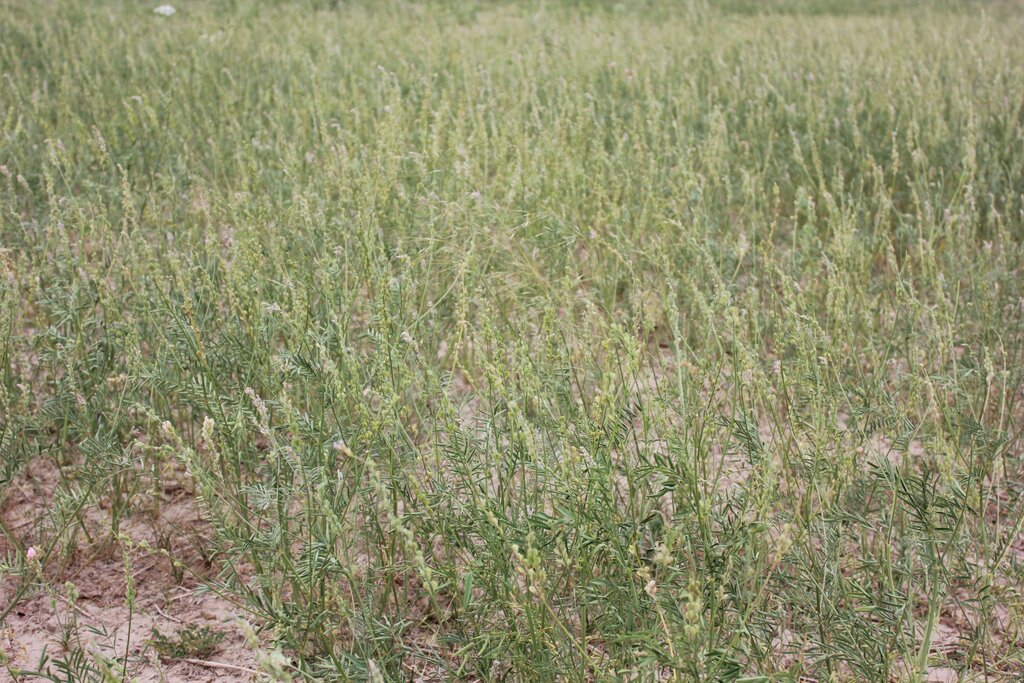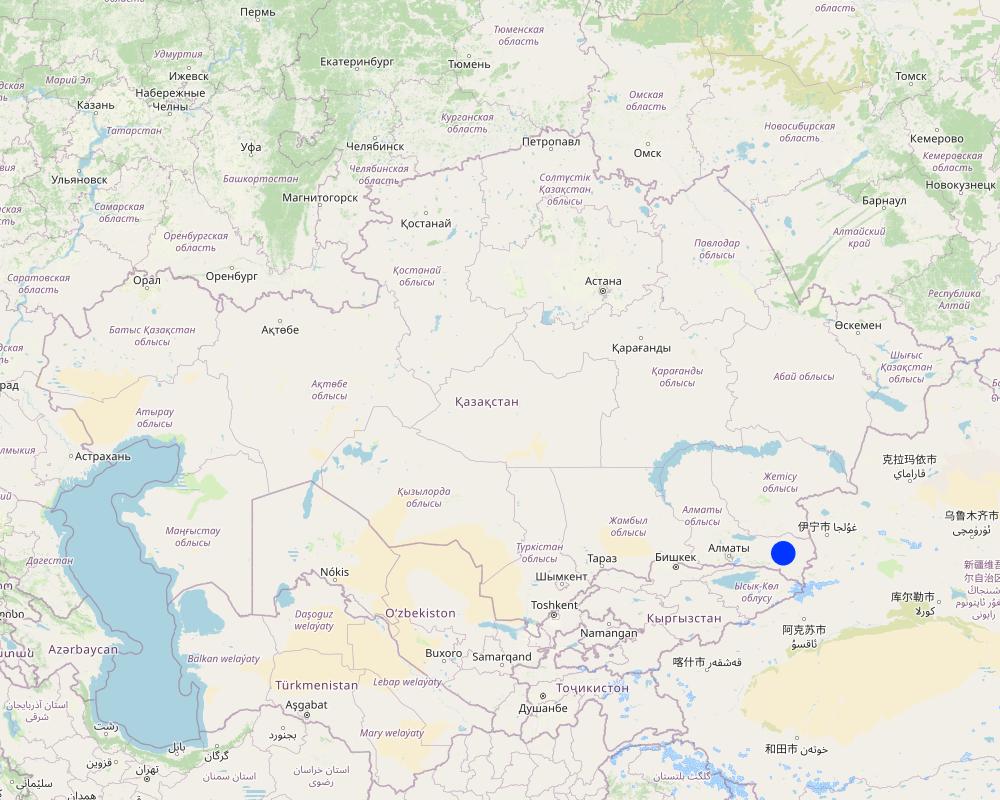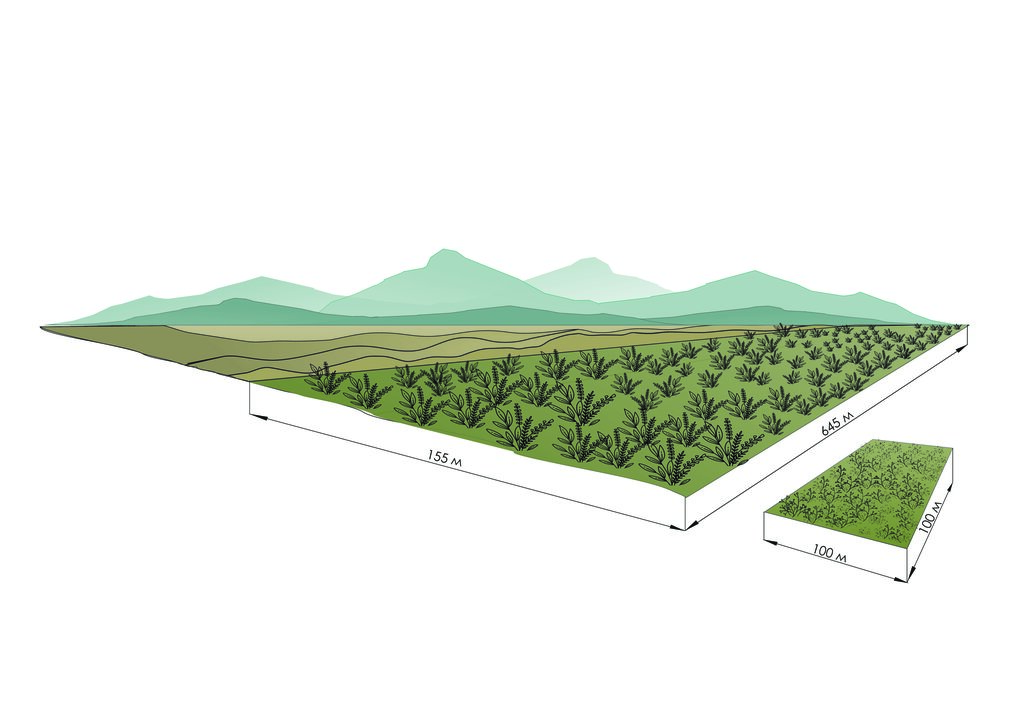Creation of sown cultural pastures for summer-autumn use in the conditions of the foothill zone of south-eastern Kazakhstan [Kazakhstan]
- Creation:
- Update:
- Compiler: Kulyash Iskandarova
- Editor: Hayot Ibrakhimov
- Reviewers: Olga Andreeva, Rima Mekdaschi Studer
technologies_6785 - Kazakhstan
View sections
Expand all Collapse all1. General information
1.2 Contact details of resource persons and institutions involved in the assessment and documentation of the Technology
land user:
Name of project which facilitated the documentation/ evaluation of the Technology (if relevant)
Integrated natural resources management in drought-prone and salt-affected agricultural production landscapes in Central Asia and Turkey ((CACILM-2))Name of the institution(s) which facilitated the documentation/ evaluation of the Technology (if relevant)
Kazakh Research Institute for Livestock and Fodder Production (Kazakh Research Institute for Livestock and Fodder Production) - Kazakhstan1.3 Conditions regarding the use of data documented through WOCAT
The compiler and key resource person(s) accept the conditions regarding the use of data documented through WOCAT:
Yes
1.4 Declaration on sustainability of the described Technology
Is the Technology described here problematic with regard to land degradation, so that it cannot be declared a sustainable land management technology?
No
Comments:
The technology is aimed at restoring degraded lands by creating cultivated pastures for summer-autumn use with the sowing of drought-resistant forage grasses
1.5 Reference to Questionnaire(s) on SLM Approaches (documented using WOCAT)
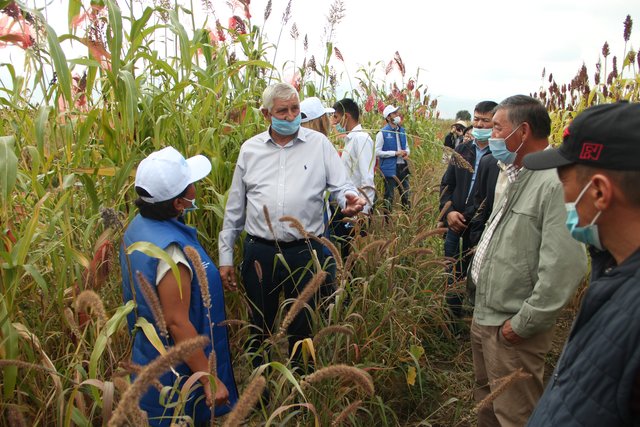
Распространение практик устойчивого землепользования путем организации демонстрационных участков … [Kazakhstan]
Организация пилотных демонстрационных участков и проведение Дней поля - мероприятия для региональных заинтересованных сторон, в основном фермеров, для получения информации о технологиях УЗП, приемах восстановления деградированных земель и пастбищ, перспективных для региона засухо- и солеустойчивых культурах и технологиях их выращивания, демонстрации результатов проекта ИСЦАУЗР-2 по расширению практики борьбы с засолением …
- Compiler: Kulyash Iskandarova
2. Description of the SLM Technology
2.1 Short description of the Technology
Definition of the Technology:
Creation of cultivated pastures for summer-autumn use with sowing of perennial drought-resistant forage crops (sainfoin under barley cover - for summer use, izen - for autumn use) in the conditions of the foothill zone of south-eastern Kazakhstan
2.2 Detailed description of the Technology
Description:
Beef cattle breeding is one of the main activities in the Sumbe rural district of Uighur District, Almaty Region, Kazakhstan. Pastures are used extensively without adherence to regulated grazing practices or consideration of permissible stocking rates, which has led to their degradation. The low productivity of forage lands does not meet the feed requirements of the existing livestock herd.
Within the framework of the FAO/GEF project “Integrated Natural Resources Management in Drought-Prone and Salt-Affected Agricultural Production Landscapes of Central Asia and Turkey” (CACILM-2), a Pasture Management and Utilization Plan was developed for the “Sayat” farm, located in the Sumbinsky rural district of Uighur District, Almaty Region, in southeastern Kazakhstan. The Plan serves as the primary guiding document for the sustainable management of pasture resources at the local level and forms part of the district’s integrated plan. This is legally defined in Article 9 of the Law of the Republic of Kazakhstan “On Pastures” and the Law of the Republic of Kazakhstan “On Local Government and Self-Government in the Republic of Kazakhstan.” Implementation of the Plan will support the rational use of pastures, including the proper and timely seasonal movement of livestock.
During the development of the Plan for the rational use of pastures, a feed deficit was identified. To address this, seasonal use with rotational grazing was proposed. To restore low-productivity natural pastures, a technology was applied involving the creation of cultivated summer–autumn pastures through the sowing of drought-resistant forage crops: sainfoin (Onobrychis viciifolia, variety Shabyndyk) under a barley cover crop on 10 hectares for summer use, and Kochia prostrata (locally called izen) on 1 hectare for autumn use.
1. Natural and Socio-Economic Conditions
The “Sayat” farm is located in Uighur District, Almaty Region, approximately 34 km south of the Chundzha village.
The territory lies within two geomorphological zones: the Ketmen mountain ridge and the adjoining piedmont plain. The mountain zone occupies the southern part of the landholding.
The climate is sharply continental: winters are unstable but with normal precipitation; springs are early; summers are hot; and autumns are long and cool. The average January temperature is –10 to –15 °C (with extremes reaching –40 °C in some years), and the average July temperature is 25–27 °C (with maxima up to 45 °C). Average annual precipitation is 260 mm, with no more than 110 mm falling during the growing season. Stable snow cover lasts 80–100 days, with depths of 15–30 cm, and water reserves in the snow range from 35 to 70 mm.
Soils are diverse, reflecting vertical zonation. On the piedmont plain, soils range from stony-gravelly, gray-brown, and light sierozems to chernozems.
Natural pasture types include sagebrush–feather grass–bluegrass, feather grass–sagebrush, and sagebrush–ephemeral associations. The vegetation cover is dominated by sagebrush, feather grass, fescue, bluegrass, fenugreek, sedge, brome, ebelek, and izen.
Pastures are grazed by local non-breed cattle. The farm owns 68 head of cattle, for which the available pastures are insufficient. To fully cover forage needs while maintaining the current herd, the farm would require an additional 247 hectares of pasture. Consequently, the creation of 11 hectares of high-productivity sown pastures was proposed.
Shoshanay village, part of the Sumbe rural district, Uighur District, Almaty Region, has a population of 735 people in 121 households. The main livelihoods are livestock husbandry and crop farming. Agricultural lands comprise 350 ha of cropland and 3,520 ha of pastures. Crops cultivated include barley and perennial grasses. Livestock herds include 9,449 sheep, 515 goats, 726 cattle (including 412 dairy cows).
2. Key Characteristics of the Technology (including technical specifications)
The technology combines forage crops for summer and autumn use (sainfoin and izen) and is relatively low-cost, since sainfoin is reseeded approximately once every 5 years and izen once every 10 years. Implementation doubles pasture productivity and contributes to establishing a stable forage base for livestock husbandry.
The technology has been applied on 11 hectares.
3. Objectives and Functions of the Technology
Establishment of high-productivity cultivated pastures through the sowing of perennial drought-resistant forage species (sainfoin and izen).
4. Main Activities and Resources Required for Implementation and Maintenance
Moldboard plowing (PLN-3.5 m plow), disking to a depth of 5–10 cm (LDG-5), harrowing (zig-zag harrow), and rolling;
Sowing perennial grasses (SZT-3.6 seeder), followed by rolling (ZKKSh-6 ring rollers). Sowing method: continuous row sowing, row spacing 15 cm, seeding rate 70–80 kg/ha sainfoin (seed depth 4–5 cm);
Sowing barley (SZT-3.6 seeder), followed by rolling (ZKKSh-6 ring rollers). Sowing method: continuous row sowing, seeding rate 100 kg/ha (seed depth 5–6 cm);
Manual sowing of izen;
Harvesting of barley.
In the first two years, until full plant development, the fields are not used as pastures. In the second year, mowing for hay is possible.
Where necessary, plots are fenced to protect against livestock damage.
Implementation costs:
The cost of establishing 1 ha of pasture with perennial forage crops (sainfoin under barley cover and izen), including soil preparation, seed purchase, and sowing, is 108,820 KZT (USD 243.91).
Maintenance costs:
Annually: early spring harrowing to conserve soil moisture, with labor and fuel costs of 1,480 KZT (USD 3.32);
Every 5 years: reseeding of sainfoin (optionally under barley cover). Including seed costs, labor, machinery operation, and fuel, total costs are 84,320 KZT (USD 189);
Every 10 years: manual reseeding of izen, with seed costs of 24,500 KZT/ha (USD 55).
5. Advantages and Impacts of the Technology
This technology is recommended for the piedmont zone of southeastern Kazakhstan.
Advantages over natural pastures:
Provides forage in both summer (sainfoin) and autumn (izen) grazing seasons;
Cultivated sown pastures supply nutritionally balanced feed;
Sowing drought-resistant perennials increases pasture productivity more than twofold compared to natural pastures;
The use of legumes (sainfoin) improves soil fertility through nitrogen fixation;
Both sainfoin and izen are highly drought-resistant.
6. Farmers’ Perceptions of the Technology
As noted by the land user, the positive aspects include:
Efficient use of land resources;
Reliable forage yields even in dry years;
Improved feed nutritional value;
Reduced production costs of final livestock products (beef).
2.3 Photos of the Technology
2.4 Videos of the Technology
Comments, short description:
-
2.5 Country/ region/ locations where the Technology has been applied and which are covered by this assessment
Country:
Kazakhstan
Region/ State/ Province:
Uyghur district, Almaty region
Further specification of location:
Shoshanai village
Is/are the technology site(s) located in a permanently protected area?
No
Map
×2.6 Date of implementation
Indicate year of implementation:
2022
2.7 Introduction of the Technology
Specify how the Technology was introduced:
- through projects/ external interventions
Comments (type of project, etc.):
FAO/GEF Project “Integrated Natural Resources Management in Drought-Prone and Salt-Affected Agricultural Landscapes of Central Asia and Turkey” (CACILM-2)
3. Classification of the SLM Technology
3.1 Main purpose(s) of the Technology
- reduce, prevent, restore land degradation
- adapt to climate change/ extremes and its impacts
- create beneficial economic impact
- create beneficial social impact
3.2 Current land use type(s) where the Technology is applied
Land use mixed within the same land unit:
No
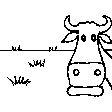
Grazing land
Extensive grazing:
- Semi-nomadic pastoralism
Animal type:
- cattle - non-dairy beef
Is integrated crop-livestock management practiced?
Yes
Products and services:
- meat
Species:
cattle - non-dairy beef
Count:
68
3.3 Has land use changed due to the implementation of the Technology?
Has land use changed due to the implementation of the Technology?
- No (Continue with question 3.4)
3.4 Water supply
Water supply for the land on which the Technology is applied:
- rainfed
Comments:
No irrigation, irrigation only by atmospheric precipitation
3.5 SLM group to which the Technology belongs
- pastoralism and grazing land management
- integrated crop-livestock management
3.6 SLM measures comprising the Technology
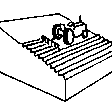
agronomic measures
- A1: Vegetation/ soil cover
Comments:
Sowing drought-resistant forage crops (sainfoin, izen)
3.7 Main types of land degradation addressed by the Technology
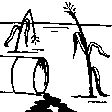
chemical soil deterioration
- Cn: fertility decline and reduced organic matter content (not caused by erosion)
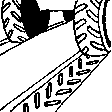
physical soil deterioration
- Pc: compaction
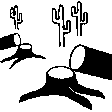
biological degradation
- Bc: reduction of vegetation cover
Comments:
The plot where the technology was applied is characterized by low humus content, soil compaction, and an increase in the number of weeds and inedible plants.
3.8 Prevention, reduction, or restoration of land degradation
Specify the goal of the Technology with regard to land degradation:
- restore/ rehabilitate severely degraded land
Comments:
The goal of the technology is to restore degraded pastures
4. Technical specifications, implementation activities, inputs, and costs
4.1 Technical drawing of the Technology
Technical specifications (related to technical drawing):
Area of the sainfoin plot: length – 645 m, width – 155 m, slope – 0.02°
Area of the izen plot: length – 100 m, width – 100 m, slope – 0.02°
Author:
Kanysh Kushenov
Date:
22/06/2023
4.2 General information regarding the calculation of inputs and costs
Specify how costs and inputs were calculated:
- per Technology unit
Specify unit:
ha
other/ national currency (specify):
tenge
If relevant, indicate exchange rate from USD to local currency (e.g. 1 USD = 79.9 Brazilian Real): 1 USD =:
446.15
4.3 Establishment activities
| Activity | Timing (season) | |
|---|---|---|
| 1. | Moldboard plowing (plough PLN-3.5) | March |
| 2. | Harrowing (Zig-Zag harrow) | March-April |
| 3. | leveling and compaction of the topsoil layer and rolling | April |
| 4. | Sowing sainfoin and barley (seeder SZP-3.6) | April |
| 5. | Sowing of izenya (manual) | December-February (depending on weather conditions) |
| 6. | Harvesting barley for grain (combine) | July |
4.4 Costs and inputs needed for establishment
| Specify input | Unit | Quantity | Costs per Unit | Total costs per input | % of costs borne by land users | |
|---|---|---|---|---|---|---|
| Labour | moldboard plowing | ha | 1.0 | 1623.0 | 1623.0 | 100.0 |
| Labour | disking | ha | 1.0 | 1039.0 | 1039.0 | 100.0 |
| Labour | harrowing, leveling and compaction of the topsoil and soil rolling | ha | 1.0 | 2922.0 | 2922.0 | 100.0 |
| Labour | sowing | ha | 1.0 | 1074.0 | 1074.0 | 100.0 |
| Equipment | maintenance of equipment | га | 1.0 | 8028.8 | 8028.8 | 100.0 |
| Equipment | operating costs | га | 1.0 | 6869.2 | 6869.2 | 100.0 |
| Plant material | sainfoin | kg | 70.0 | 600.0 | 42000.0 | |
| Plant material | ячмень | kg | 100.0 | 150.0 | 15000.0 | 100.0 |
| Plant material | izen | kg | 7.0 | 3500.0 | 24500.0 | |
| Other | diesel fuel (plowing) | ha | 1.0 | 3586.0 | 3586.0 | 100.0 |
| Other | diesel fuel (harrowing) | ha | 1.0 | 506.0 | 506.0 | 100.0 |
| Other | diesel fuel (leveling and compaction of the topsoil) | ha | 1.0 | 682.0 | 682.0 | 100.0 |
| Other | diesel fuel (pre-sowing rolling) | ha | 1.0 | 242.0 | 242.0 | 100.0 |
| Other | diesel fuel (sowing) | ha | 1.0 | 506.0 | 506.0 | 100.0 |
| Other | diesel fuel (post-sowing rolling) | ha | 1.0 | 242.0 | 242.0 | 100.0 |
| Total costs for establishment of the Technology | 108820.0 | |||||
| Total costs for establishment of the Technology in USD | 243.91 | |||||
If land user bore less than 100% of costs, indicate who covered the remaining costs:
Part of the costs was covered by the FAO/GEF project "Integrated Natural Resources Management in Drought-Prone and Salt-Affected Agricultural Landscapes of Central Asia and Turkey" (CACILM-2)
Comments:
Through the FAO/GEF project ‘Integrated Natural Resources Management in Drought-Prone and Salt-Affected Agricultural Production Landscapes in Central Asia and Turkey’ (CACILM-2), seeds of perennial grasses (sainfoin and Kochia prostrata) were procured. The costs associated with the operation of agricultural machinery (owned by the land user), fuel and lubricants, and labor were covered by the land user.
4.5 Maintenance/ recurrent activities
| Activity | Timing/ frequency | |
|---|---|---|
| 1. | Early spring harrowing to retain soil moisture | annually |
| 2. | Sowing sainfoin | Once every 5 years |
| 3. | Sowing of izen (manual) | Once every 10 years |
Comments:
Early spring harrowing is carried out to retain moisture in the soil, evenly distribute plant and root residues, create an optimal soil structure, and aerate the soil.
4.6 Costs and inputs needed for maintenance/ recurrent activities (per year)
| Specify input | Unit | Quantity | Costs per Unit | Total costs per input | % of costs borne by land users | |
|---|---|---|---|---|---|---|
| Labour | harrowing | ha | 1.0 | 974.0 | 974.0 | 100.0 |
| Other | Fuel costs (fuel and lubricants) harrowing | ha | 1.0 | 506.0 | 506.0 | 100.0 |
| Total costs for maintenance of the Technology | 1480.0 | |||||
| Total costs for maintenance of the Technology in USD | 3.32 | |||||
Comments:
Costs of maintaining the technology
Annually: early spring harrowing is carried out to preserve soil moisture (labor and fuel costs amount to 1,480 KZT, or USD 3.32);
Every 5 years: sainfoin is sown (possibly under a barley cover crop). Taking into account the costs of sainfoin and barley seeds, labor, machinery maintenance, operational expenses, and fuel for all agricultural operations (moldboard plowing, disking, harrowing, rolling, and sowing), the total cost is 84,320 KZT (USD 189);
Every 10 years: forage kochia is sown, with seed costs amounting to 24,500 KZT/ha (USD 55).
4.7 Most important factors affecting the costs
Describe the most determinate factors affecting the costs:
Purchase of seeds of perennial forage grasses, fuel and lubricants costs and operating costs for equipment maintenance. Inflation.
5. Natural and human environment
5.1 Climate
Annual rainfall
- < 250 mm
- 251-500 mm
- 501-750 mm
- 751-1,000 mm
- 1,001-1,500 mm
- 1,501-2,000 mm
- 2,001-3,000 mm
- 3,001-4,000 mm
- > 4,000 mm
Specify average annual rainfall (if known), in mm:
260.00
Indicate the name of the reference meteorological station considered:
Awat, Uyghur region
Agro-climatic zone
- semi-arid
the climate is sharply continental
5.2 Topography
Slopes on average:
- flat (0-2%)
- gentle (3-5%)
- moderate (6-10%)
- rolling (11-15%)
- hilly (16-30%)
- steep (31-60%)
- very steep (>60%)
Landforms:
- plateau/plains
- ridges
- mountain slopes
- hill slopes
- footslopes
- valley floors
Altitudinal zone:
- 0-100 m a.s.l.
- 101-500 m a.s.l.
- 501-1,000 m a.s.l.
- 1,001-1,500 m a.s.l.
- 1,501-2,000 m a.s.l.
- 2,001-2,500 m a.s.l.
- 2,501-3,000 m a.s.l.
- 3,001-4,000 m a.s.l.
- > 4,000 m a.s.l.
Comments and further specifications on topography:
1301 m above sea level
5.3 Soils
Soil depth on average:
- very shallow (0-20 cm)
- shallow (21-50 cm)
- moderately deep (51-80 cm)
- deep (81-120 cm)
- very deep (> 120 cm)
Soil texture (topsoil):
- medium (loamy, silty)
Topsoil organic matter:
- low (<1%)
If available, attach full soil description or specify the available information, e.g. soil type, soil PH/ acidity, Cation Exchange Capacity, nitrogen, salinity etc.
sierozem soils, pH 7.0
5.4 Water availability and quality
Ground water table:
5-50 m
Availability of surface water:
poor/ none
Water quality (untreated):
good drinking water
Water quality refers to:
both ground and surface water
Is water salinity a problem?
No
Is flooding of the area occurring?
No
5.5 Biodiversity
Species diversity:
- low
Habitat diversity:
- low
5.6 Characteristics of land users applying the Technology
Sedentary or nomadic:
- Semi-nomadic
Market orientation of production system:
- mixed (subsistence/ commercial)
Off-farm income:
- 10-50% of all income
Relative level of wealth:
- average
Individuals or groups:
- individual/ household
Level of mechanization:
- mechanized/ motorized
Gender:
- men
Age of land users:
- middle-aged
5.7 Average area of land used by land users applying the Technology
- < 0.5 ha
- 0.5-1 ha
- 1-2 ha
- 2-5 ha
- 5-15 ha
- 15-50 ha
- 50-100 ha
- 100-500 ha
- 500-1,000 ha
- 1,000-10,000 ha
- > 10,000 ha
Is this considered small-, medium- or large-scale (referring to local context)?
- medium-scale
5.8 Land ownership, land use rights, and water use rights
Land ownership:
- individual, titled
Land use rights:
- leased
Are land use rights based on a traditional legal system?
Yes
Specify:
In accordance with the Land Code of the Republic of Kazakhstan, agricultural lands are leased for a period of 2 to 49 years.
5.9 Access to services and infrastructure
health:
- poor
- moderate
- good
education:
- poor
- moderate
- good
technical assistance:
- poor
- moderate
- good
employment (e.g. off-farm):
- poor
- moderate
- good
markets:
- poor
- moderate
- good
energy:
- poor
- moderate
- good
roads and transport:
- poor
- moderate
- good
drinking water and sanitation:
- poor
- moderate
- good
financial services:
- poor
- moderate
- good
6. Impacts and concluding statements
6.1 On-site impacts the Technology has shown
Socio-economic impacts
Production
fodder production
fodder quality
animal production
Income and costs
farm income
Ecological impacts
Soil
soil compaction
nutrient cycling/ recharge
6.2 Off-site impacts the Technology has shown
impact of greenhouse gases
Specify assessment of off-site impacts (measurements):
Pastures are effective carbon sequestrators
6.3 Exposure and sensitivity of the Technology to gradual climate change and climate-related extremes/ disasters (as perceived by land users)
Gradual climate change
Gradual climate change
| Season | increase or decrease | How does the Technology cope with it? | |
|---|---|---|---|
| annual temperature | increase | well | |
| seasonal temperature | summer | increase | well |
| annual rainfall | decrease | well | |
| seasonal rainfall | summer | decrease | well |
Comments:
The technology uses drought-resistant forage crops (sainfoin, izen)
6.4 Cost-benefit analysis
How do the benefits compare with the establishment costs (from land users’ perspective)?
Short-term returns:
positive
Long-term returns:
very positive
How do the benefits compare with the maintenance/ recurrent costs (from land users' perspective)?
Short-term returns:
positive
Long-term returns:
very positive
Comments:
Increased income due to increased weight gain of beef cattle
6.5 Adoption of the Technology
- single cases/ experimental
If available, quantify (no. of households and/ or area covered):
1 household, 11 ha
Of all those who have adopted the Technology, how many did so spontaneously, i.e. without receiving any material incentives/ payments?
- 0-10%
6.6 Adaptation
Has the Technology been modified recently to adapt to changing conditions?
No
6.7 Strengths/ advantages/ opportunities of the Technology
| Strengths/ advantages/ opportunities in the land user’s view |
|---|
|
- increased efficiency of land use, increased quantity of products per unit area; - increased nutritional value of feed; - guaranteed yield of forage crops, especially in dry years; - decreased labor costs, decreased production costs of products - cattle meat. |
| Strengths/ advantages/ opportunities in the compiler’s or other key resource person’s view |
|---|
|
- improved soil structure and water-air regime of soils; - decreased soil degradation; - sainfoin crops enrich the soil with nitrogen, which affects the yield of forage crops; - sainfoin and izen are drought-resistant crops, which guarantees a harvest in dry years. |
6.8 Weaknesses/ disadvantages/ risks of the Technology and ways of overcoming them
| Weaknesses/ disadvantages/ risks in the land user’s view | How can they be overcome? |
|---|---|
| Labor and financial costs associated with the introduction of the technology. The need for ownership or rental of specialized agricultural machinery and implements (such as a grain–grass seeder SZT, ring harrow, etc.). | Cooperation of land users for joint use of agricultural machinery. Organization of machine and tractor stations (MTS) at the level of rural districts and regions. |
| Weaknesses/ disadvantages/ risks in the compiler’s or other key resource person’s view | How can they be overcome? |
|---|---|
| Labor and financial costs for launching the technology and maintaining it (annual harrowing, purchasing seeds and sowing sainfoin every 5 years). |
Cooperation of land users for joint use of agricultural machinery. Allocation of subsidies for the purchase of seeds, or sale of seeds at preferential prices for land users implementing soil-protective technologies that ensure sustainable land use. |
7. References and links
7.1 Methods/ sources of information
- field visits, field surveys
2
- interviews with land users
1
- interviews with SLM specialists/ experts
2
When were the data compiled (in the field)?
26/04/2023
7.2 References to available publications
Title, author, year, ISBN:
-
7.3 Links to relevant online information
Title/ description:
Field Days are held in Kazakhstan as part of the World Day to Combat Desertification
URL:
https://agroinfo.kz/dni-polya-provodyatsya-v-kazaxstane-v-ramkax-vsemirnogo-dnya-po-borbe-s-opustynivaniem/
Title/ description:
The fight against desertification in Kazakhstan
URL:
https://mygorod.kz/?p=121382
7.4 General comments
-
Links and modules
Expand all Collapse allLinks

Распространение практик устойчивого землепользования путем организации демонстрационных участков … [Kazakhstan]
Организация пилотных демонстрационных участков и проведение Дней поля - мероприятия для региональных заинтересованных сторон, в основном фермеров, для получения информации о технологиях УЗП, приемах восстановления деградированных земель и пастбищ, перспективных для региона засухо- и солеустойчивых культурах и технологиях их выращивания, демонстрации результатов проекта ИСЦАУЗР-2 по расширению практики борьбы с засолением …
- Compiler: Kulyash Iskandarova
Modules
No modules


